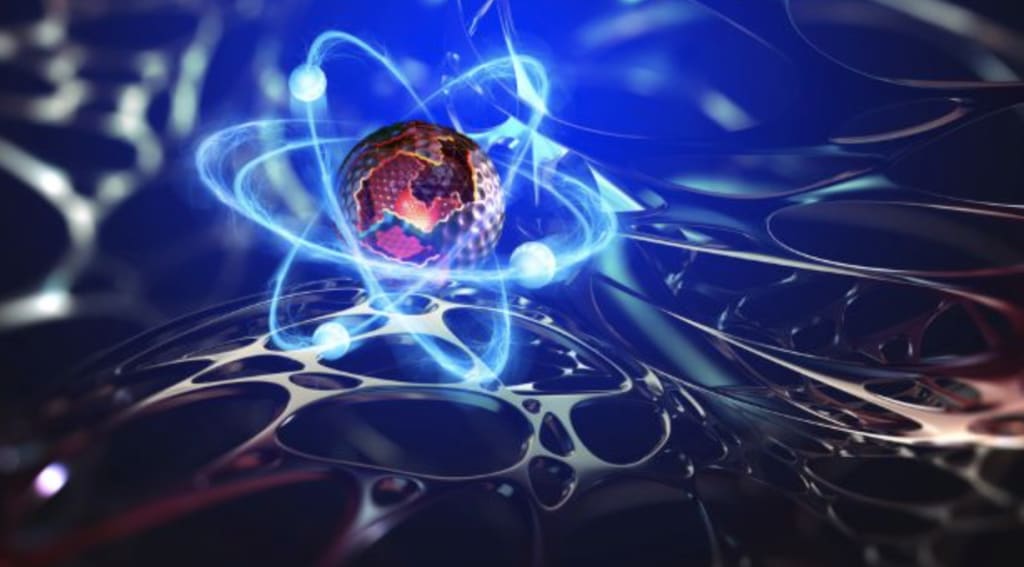The ten craziest scientific breakthroughs of 2022
The ten craziest scientific breakthroughs of 2022

The ten craziest scientific breakthroughs of 2022
It's been a terrible year, 2022. It was the first year after the lockdown that things properly began to open up for the majority of the world, giving us the chance to resume our lives as usual. And that meant an opportunity for scientists and researchers all across the world to return to the lab full-time. Yes, science has had a busy year in 2022. In the last 12 months, immunology research has made enormous strides, space flight has made enormous strides, and in the last few weeks, intriguing evidence has emerged suggesting that nuclear fusion might be feasible on Earth. However, it's also been a year for the bizarre and unexpected, like turtles the size of rhinos and monkeys that pick their noses. Here are some of the strangest and most fascinating discoveries that grabbed media attention this year.
the most well-known websites on the planet.
🚨CLICK HERE FOR YOUR CHEAP FLIGHTS AND HOTELS 🚨
10. Researchers Teach Brain Cells to Play Pong
The workings of the brain are amazing. As part of the DishBrain project, researchers from Melbourne's Cortical Labs began testing with some in 2022. They developed artificial neurone on a micro-electrode array device after growing them in a petri dish. These chips can electrically stimulate the cells while also keeping track of their activity, making them ideal for this kind of task. As the brain develops, brain cells branch out, connect with one another, and create neural networks similar to those in the brain. Following this on the chip, the researchers connected DishBrain to a computer and launched the Pong game. The neurons in DishBrain were stimulated positively through the chip each time it performed successfully, such as when the paddle made contact with the ball. However, poor play produced a stimulation that was adverse and entropically unfavorable.
After this, the neutrons improved significantly within five minutes, essentially "learning" how to play the game better. DishBrain was dubbed a "breakthrough in synthetic biological intelligence" by the development team.
🚨CLICK HERE FOR YOUR CHEAP FLIGHTS AND HOTELS 🚨
9 T. Rex’s Tiny Arms May Have Been Useful for Sex
One of the most dreadful carnivores to ever roam the Earth was the Tyrannosaurus rex. But why did it have arms that were so short? The solution, though, might lie in a new study by researchers in Argentina. They claim that the little limbs served as a useful aid for the enormous reptile during its passionate mating ritual. The researchers discovered a new species of dinosaur, which led them to this conclusion. Meraxes gigas was a huge predator with short arms, similar to the T. rex. The beast, which had a forearm half the size of its skull, was about 36 feet (11 meters) long, according to fossil evidence. According to scientists, these Meraxes utilized their heads and lips to battle, but their arms were used for other, possibly more intimate behaviours like holding on to a partner during a sexual encounter. It should follow that if it holds true for Meraxes that it also holds true for Tyrannosaurus. Lead author Juan Canale said, "I'm confident that those proportionately little limbs had some form of purpose. "The arm has strong muscles since the skeleton exhibits massive muscle insertions and completely formed pectoral girdles.
🚨CLICK HERE FOR YOUR CHEAP FLIGHTS AND HOTELS 🚨
8 Fetuses Screw Up Their Faces at Kale
Even at the best of times, getting kids to eat their vegetables may be challenging, but it seems certain kids may have a womb-born dislike to particular vegetables. In September 2022, cutting-edge imaging methods demonstrated that pregnant women who eat kale make their unborn children frown. But it's believed that eating a carrot will make you feel considerably better. 100 fetuses were observed by researchers at Durham University in the UK using 4D ultrasound. The mothers were then given a capsule containing either kale powder or carrot powder. Those that received carrots appeared to practically laugh during the scans. The kale-eating infants, however, made disgusted faces. Until recently, research solely paid attention to behavior after birth, despite the fact that scientists have long hypothesized that unborn newborns sense taste when they consume nutrients. This study "is the first to show these effects prior to birth," according to author Beyza Ustun.
🚨CLICK HERE FOR YOUR CHEAP FLIGHTS AND HOTELS 🚨
7 Turns Out You Can Smile Yourself Happy
At number seven, we have a tasty entry. Psychologists discovered in 2022 that the old wives' tale that smiling helps you feel a little happier is real. The Many Smiles Collaboration, led by Stanford University's Nicholas Coles, recruited nearly 4,000 participants from 19 different nations and encouraged them to grin in various ways. Some people made spontaneous smiles by contracting their mouth muscles. People imitated an actor. The third group engaged the same muscles that we use to smile by holding a pen between their teeth. Then, while grinning or appearing neutral, individuals were asked to rate their level of happiness. In order to assess their levels of enjoyment, they were also given pictures of pleasant objects, such as puppies, kittens, and flowers. Coles discovered that the forced smilers with pens in their teeth showed little emotional difference. However, those who naturally smiled claimed to feel a little happier. The "facial feedback theory" is something that is tapped into by those joyful grins. In essence, smiling makes you feel happier on the inside whereas frowning makes you feel a little worse.
🚨CLICK HERE FOR YOUR CHEAP FLIGHTS AND HOTELS 🚨
6 Aye-Ayes Use Their Long Middle Fingers to Pick Their Noses
There are many odd and unexpected occurrences in the animal realm. One such peculiar occurrence is the aye-aye, a tiny monkey from Madagascar with a filthy habit: picking its nose. Aye-ayes are regarded as a death omen in some cultures. You are considered to be on the verge of death if an aye-aye points a crooked, spindly finger at you. However, those unsettling digits have purposes other than identifying the impendingly deceased. Aye-ayes dig out grubs with their finger for a nice snack. It now appears that they also do this with boogers. A CT scan reconstruction made by researchers studying aye-aye behavior demonstrates just how far back their fingers travel as they pick their noses. The mammals appear to be scraping the back of their own brains in the image. Now, scientists want to know why so many animals pick their noses even though it seems to serve no purpose. Orangutans, chimpanzees, and, of course, humans have all been observed in the act, making a total of over 12 species of primates so far.
🚨CLICK HERE FOR YOUR CHEAP FLIGHTS AND HOTELS 🚨

5 Scientists Uncover a New Type of Molecular Bond
German researchers were thrilled to report a previously unheard-of advancement in particle science in July 2022. The team from the University of Stuttgart discovered a novel kind of molecular link between an enormous particle called a Rydberg atom and a positive ion. When an outside electron experiences high excitement and jumps abnormally far from the nucleus, Rydberg atoms are created. Rydberg atoms can occasionally be 1,000 times larger than their ordinary counterparts. By utilizing a cloud of rubidium at a tiny bit over absolute zero—the temperature at which nothing moves—the researchers accomplished this amazing achievement. They first utilized lasers to de-electronize some rubidium atoms, converting them into positively charged ions, and then they used lasers to excite other atoms into a Rydberg state. Rydberg atoms and ions start to interact when they are put together at such low temperatures. Bonds may form as a result of the ions' alteration of the atoms' electromagnetic structure, as was the case in the Stuttgart experiment. This recently discovered molecular bond is longer than some bacterial species, in contrast to the majority of known molecular bonds, which are only a few nanometers long. Unquestionably a record was found.
🚨CLICK HERE FOR YOUR CHEAP FLIGHTS AND HOTELS 🚨
4 Turtles the Size of Rhinos Lived in Prehistoric Europe
You can tell a newly found species must have been enormous when it is named after a sea monster from the Bible. When it swam the seas of what is now Europe, Leviathanochelys aenigmatica is estimated to have been about 13 feet (4 meters) long. Between 83.6 and 72.1 million years ago, the marine monster was alive. The rhino-sized monster was given the name Leviathan after the ancient sea serpent with many heads, Leviathan. It was found following the discovery of a pelvis and pieces of a carapace in northern Spain's Cal Torrades region. Scientists had only before discovered evidence of enormous marine turtles in the Americas. The discovery of another creature of this size in Europe startled the team that discovered L. aenigmatica. Archelon, which first appeared some six million years after L. aenigmatica, continues to be the largest sea turtle ever discovered. However, this recently discovered colossus is a formidable rival. The discovery of the new, enormous, and strange marine turtle Leviathanochelys aenigmatica from the Middle Campanian marine deposits of the Southern Pyrenees, which rivals Archelon in size, sheds light on the variety of marine turtles and how the phenomenon of gigantism in these groups was also occurring in Europe, according to the researchers' study.
🚨CLICK HERE FOR YOUR CHEAP FLIGHTS AND HOTELS 🚨
3 The Cannibals of Prehistoric Britain
We discovered in 2022 that there is a possibility that cannibals formerly lived in the UK. At Gough's Cave in Somerset and Kendrick's Cave in Llandudno, archaeologists found human bones. Both originate from the time just before the previous ice age. The earliest DNA ever discovered in Britain came from these bodies, and molecular researchers were able to learn a lot about the ancestors of the nation through examination. The discovery that there were two groups of humans residing in Britain at the period, as revealed by the DNA, astonished the team. The first's diet consisted mainly of fish and other marine animals, according to the evidence discovered in Kendrick's Cave. However, the one at Gough's Cave has cannibalistic markings. It was established that this prospective people-eater was descended from Goyet Q2, a 15,000-year-old cadaver recovered in Belgium.
🚨CLICK HERE FOR YOUR CHEAP FLIGHTS AND HOTELS 🚨
2 World’s First Synthetic Embryo
The use of stem cells in research is still a hotly debated subject. However, a team from the Weizmann Institute in Israel used them to create the first artificial embryo in August. There was no fertilization, no use of sperm or eggs in the creation process. Instead, they used mouse stem cells to create an embryo-like structure that included a developing brain, digestive tract, and beating heart. The group described in their research how this ground-breaking discovery creates the potential for more understanding of embryonic development. However, they believe that over time, it might also reduce the amount of animal tests done. They believe that similar technology may eventually be used to generate cells and tissue for transplanting into humans. The variety of possible uses is undoubtedly astounding. Jacob Hanna, the study's principal author, said, "Remarkably, we demonstrate that embryonic stem cells form full synthetic embryos, i.e., this includes the placenta and yolk sac surrounding the embryo. "This work and its implications greatly excite us.
🚨CLICK HERE FOR YOUR CHEAP FLIGHTS AND HOTELS 🚨
1 Male Mason Wasps Fight Predators with Their Penis Spines
Watch how male wasps defend themselves against predators by using their spiky genitalia.
Just try to picture it. You are a thirsty tree frog looking for a snack. When you are about to bite on a tasty-looking Mason wasp, it stabs you with its barbed penis. Up until recently, researchers thought that only female mason wasps could protect themselves from attackers. The men had no means of defence , whereas the women could sting and employ their toxins. But they now understand that this is untrue. The male has two retractable genital spines that he can use to defend himself from threatening opponents along his penis. The discovery was first made by Misaki Tsujii, a graduate student in Japan. As part of another study into their life cycles, she was touching them when one of them suddenly punctured her finger. Scientists fed Japanese tree frogs mason wasps to satisfy their hunger in order to learn more. The insects responded by biting back with their mandibles and spiky penises. 35% of the wasps survived the ordeal, however over 65% were still eaten. They conducted the experiment once more using various mason wasps that had had their genitalia removed. Unsurprisingly, the male wasps were consumed faster without their retractable penis stabbers.
🚨CLICK HERE FOR YOUR CHEAP FLIGHTS AND HOTELS 🚨
By Paul Smith
About the Creator
Paul Smith
I love writing stories on things that inspire me, I love to travel explore






Comments
There are no comments for this story
Be the first to respond and start the conversation.